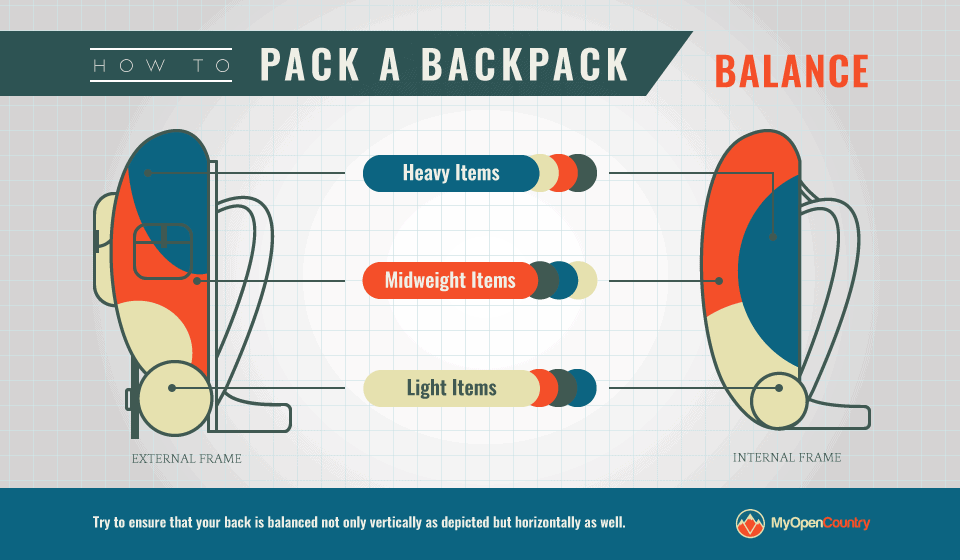Most of us don’t have the luxury of a trusty alpaca, donkey, yak, team of sled dogs, or a softhearted sucker of a hiking partner willing to do our gear-carrying for us. As such, taking all of our gear with us wherever we’re going means relying on our own steam and strength, as well as, of course, a solid, trustworthy, comfortable backpack. But what type of backpack is best?
Browse any collection of photos of hikers in the 70s, 80s, and 90s and you’re likely to find a curious specimen of portation device that, like that era’s mullet and handlebar mustache, has largely gone the way of the dodo: the external frame backpack.
Like the mullet and the flamboyant whiskers, however, this once-popular pack type still has a few stubborn, die-hard adherents who swear by its superiority over internal frame packs, and brands such as Kelty, ALPS Mountaineering, and Vargo all include external-frame models in their product ranges. So, have they missed something, or have we?
What both types of pack have in common is that they carry stuff and require less feeding than the alpaca, donkey, yak, dogs, or gullible-cum-saintlike partner. Otherwise, they’re very different beasts…
In this article, we’re going to take a look at those differences by doing a bit of digging into the merits of the external frame backpack and weighing them up against the benefits of the more standard, internal frame backpack.
Before we get down to that, let’s first take a look at some of the article’s more pertinent take-homes.
Table of Contents
Considerations When Choosing a Backpack
Capacity and Weight
Are you likely to be trekking for days across vast stretches of unpeopled wilderness, or just day-hiking and overnighting with fairly light loads? Are you a better-have-it-here-than-at-home style of hiker or a backcountry minimalist? What you tend to get up to in the wild, in conjunction with your fitness levels, will largely determine what capacity and weight of pack will be best suited to your needs.
Most backpack manufacturers will list both the weight of their pack and its capacity, which is usually given either in liters (i.e. ‘55L’) or cubic centimeters (i.e 1000cc/1000cm3).
When considering the capacity of your would-be pack, don’t forget to take into account external storage capabilities. Many external frame backpacks can carry more gear on the outside of the pack than they can inside, as seen in the video below.
Compartmentalization
The compartments of you backpack function, essentially, like an email inbox, giving you plenty of separate ‘folders’ (i.e. pockets and compartments) in which you can store your gear for organization purposes. This is handy for two reasons: firstly, you can easily locate your gear without fishing through the bulk contained in a single, large central compartment; secondly, you can keep wet or sharp gear (such as crampons) away from dry or fragile gear.
The downside to packs that prioritize compartmentalization is that the central wells or compartments often aren’t big enough to hold large items such as backpacking tents or sleeping bags.
Comfort
When considering a backpack, comfort is not only king but also queen, prince, princess and just about every other major member of the royal family tree. The other items mentioned in this list no doubt contribute to a pack’s nobility, but are not necessarily deal-breakers as regards a pack’s claim to the ‘throne’ that is your back.
Without comfort, essentially, a pack is all but useless. Some features that contribute to a pack’s comfort are padding, weight distribution, ventilation, and fitting, all of which we’ll take a closer look at in our side-by-side comparison of internal and external frame backpacks below.
Practicality
Being able to jam all your gear in there and carry it comfortably, unfortunately, doesn’t equate to functionality. The type of terrain you’re tackling and a few other considerations, such as compactness and load distribution, will also determine just how practical and user-friendly your pack is.
Again, the answer to the internal vs external frame question will come down to weighing up the pros and cons and matching the pack to your type of outdoor adventure. On wide, well-maintained trails external frame packs are in their element, but on narrow, uneven ones they can be prone to snagging on branches and throwing you off balance.
If you plan on covering steep, exposed ground or doing any scrambling while wearing your pack, moreover, the high load positioning of external frame backpacks is the last place you want to have it.

Additionally, if you want a pack that will fit in the trunk of your car or even squeeze into your tent with you once emptied at the end of a day’s hiking, a smaller capacity, frameless pack may well be the way to go.
What are internal & external frame backpacks?
Internal frame backpacks, in a nutshell, are those with integrated suspension systems enclosed inside the rear of the pack, either in the form of aluminum stays, plastic frame-sheets, foam panels, or Dyneema webbing.
Usually, these packs are lighter and roomier than their external frame equivalents and are designed to conform to contours of your back, thus enhancing mobility and maneuverability, but also forcing you to bend over to balance the weight and restricting ventilation.
External frame backpacks are built with a rigid, usually aluminum or graphite frame on the exterior of the pack, as seen in these pics of the Kelty Trekker 65. They sit higher on your back but position more weight on your hips and lower body. The frame also provides airflow between the pack and your body by leaving a small gap between the two.
They’re not so common these days, but — as mentioned above — enjoyed something of a heyday back in the 70s and 80s. Below, we’ll discover whether this last generation of hikers were onto something or, as with the mullets, just showcasing a regrettable, short-lived quirk that’s best consigned to the annals of history.
Pros & Cons of Internal Frame Backpacks

Internal frame backpacks account for the vast majority of packs you’ll see anywhere around the world. Like any gear item, they have their advantages and disadvantages:
Pros
- Usually much lighter than external-frame packs
- More streamlined, compact, and give you a lower center of gravity (better if hiking on steep or exposed ground)
- Ergonomic shape means they feel like they cling to the contours of your body (*also, potentially, a disadvantage due to the restriction this places on ventilation)
- Well-fitted packs don’t tend to rub or chafe at hips (as external frame may do with heavier loads)
- Versatility: one 40/50l pack will probably serve your purposes for thru-treks, regular day-hikes, alpine ascents, multi-pitch climbing, ski mountaineering, snowshoeing and a number of other activities
Cons
- Don’t distribute load as well as many external-frame backpacks
- Can be very pricey
- Some models have poor ventilation owing to a lack of space or contouring between rear padding and your back tend to place majority of pack weight on your shoulders
Pros & Cons of External Frame Backpacks
They might not be in fashion these days, but external-frame backpacks have a number of things going for them that might just tip the scale in their favor for some users. The most notable of the pros and cons are as follow:
Pros
- Usually offer better load distribution and help ensure that pack weight is placed on your hips and lower body as opposed to your shoulders. The more erect posture this engenders allows you to walk with a straight back, see where you’re going better, and breath more freely
- The external frame suspends the pack a few centimeters from your back, meaning there is a steady, ventilating airflow between the material of the pack and your skin — ideal for hiking in sweaty weather
- Many come with adjustable frames, allowing you to fit the pack to your body shape
- Usually boast a lot of compartments, which makes it easy to store all your gear, locate it when need be, and also to pack and unpack
- True ‘beasts of burden’ — these packs are designed for particularly heavy loads and hiking on wide, established trails
- Price: generally cheaper than internal frame packs
Cons
- Heavier than internal frame packs
- Tend to be bulky and slightly unwieldy
- Can slide and bump across your back if you’re hiking on uneven terrain
- Because of their top-heavy weight distribution, they are great for smooth, fairly level trails but not ideal on steep or exposed ground
- Have a tendency to snag on branches or rocks if you’re on a narrow trail
- Very unlikely to comply with most airlines’ maximum legal carry (MLC)
External Vs Internal Backpacks: How to Choose What Is Right for You
As with any item of hiking gear, the selection process with backpacks will ultimately boil down to how you plan on using it and personal preferences. That said, the advantages and disadvantages above have demonstrated that the short and sweet answer is this: internal frame for lighter loads on more varied terrain, external frame for heavy loads on more level, wide trails, and for hikers who just can’t seem to find an internal frame pack that’s comfortable.
To help you choose, we’d recommend answering these questions after referring to the external vs internal backpacks analysis above:
- Will I be traveling on easy, well-established trails?
- Do I anticipate carrying a lot of gear?
- Do I need to carry bulky items like a tent, sleeping mat, and sleeping bag?
- Would I rather be comfortable than stylish?
If you answered ‘yes’ to all or most of the above, then an external frame backpack might just be worth considering…


If your backpack is going to get wet a lot–either because you’re in a very humid environment or there’s a good chance your pack could fall into a lake, river, etc.–an external frame is probably the way to go.
With an external frame pack, you can remove the backpack from the frame, wash it thoroughly, and hang it to dry in a hot, sunny clearing. You can’t do that with an internal frame pack. Being able to fully wash and dry your backpack is immensely helpful, especially if you’re in tropical rainforest or other environment where mold grows quickly.